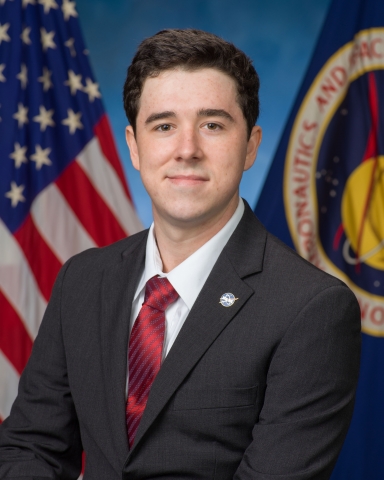To say ARCS Scholar Samuel Buckner is passionate about aerospace engineering is an understatement.
As a boy, he was fascinated by space. But his professional pursuit grew exponentially when private companies, such as SpaceX and Blue Origin, began building their own vehicles with the intent of strengthening America’s space program.
“It occurred to me that we were on the edge of a second space age. Spaceflight was becoming relevant again and I thought this is the perfect time to get involved in the field,” Buckner explains.
A first year PhD student in the William E. Boeing Aeronautics and Astronautics Department at University of Washington, Buckner is currently studying space vehicle mechanics and flight optimization.
| ARCS Scholar Samuel Buckner prepares to perform software testing on a piNAV GPS system for the Advanced Autonomous Multiple Spacecraft (ADAMUS) laboratory's D3 CubeSat mission in October 2019. (Courtesy: Samuel Buckner) |
Specifically, he and his team are focused on the entry, descent and landing guidance field, which essentially provides a path for a space vehicle to enter the atmosphere from point “A” and land at point “B.” The group uses mathematical methods from Optimization Theory to produce a rocket trajectory that minimizes the amount of fuel burned when traveling between those two points.
 |
| ARCS Scholar Samuel Buckner poses in front of a previously flown New Shepard rocket booster while touring the Blue Origin Orbital Launch Site in Cape Canaveral, Florida. (Courtesy: Blue Origin) |
According to Buckner, his team developed new techniques involving Convex Optimization and Convexification to drastically simplify those problems—plus create a pinpoint guidance system. “I want a more robust method that allows a spacecraft to follow a trajectory straight to an endpoint. In this case, I'm interested in power descent guidance, which autonomously guides a vehicle to a landing point, whether it be on Earth, the moon, Mars, or an asteroid,” he explains.
Buckner narrowed down his research to further ensure the spacecraft lands safely, using algorithms based on Neighboring Optimal Control. “It would allow onboard computers to quickly re-compute trajectories in real time in case they detect a hazard not seen during the initial entry, like a giant boulder, and land safely in another place,” he adds.
It’s no coincidence that Buckner’s research correlates with the same engineering analysis explored by privately funded aerospace companies, like Blue Origin and SpaceX, and government agencies, such as NASA. The ARCS Scholar interned in some capacity with all three entities over a span of three years, most recently with Blue Origin.
 |
| ARCS Scholar Samuel Buckner (second from right, second row) stands with fellow Blue Origin interns after the first human flight in the company's history near Van Horn, Texas on July 20, 2021.(Courtesy: Blue Origin) |
Buckner says for nine months he tweaked a “fluid control system” within Blue Origin’s next generation New Glenn rocket. He believes his work will be utilized during the vehicle’s first space launch later this year.
Prior to Blue Origin, most of Buckner’s experience was through NASA’s Pathways Internship Program—mainly at the Johnson Space Center in Houston, Texas. Under a joint program between NASA and private spaceflight companies, Buckner became a part of the Commercial Crew Program that worked on the SpaceX Crew Dragon. SpaceX made history on September 16, 2021, when it launched the first all civilian crew into space.
Buckner says he helped solve a vehicle optimization problem and fine-tuned trajectory parameters in the months leading up to the September launch. “I was able to watch the launch in person. I felt an overflowing sense of accomplishment to see the mission go off without a hitch and knowing I contributed to it,” he states.
| ARCS Scholar Samuel Buckner stands in the ISS mission control room interning as a flight operations Pathways co-op at NASA’s Johnson Space Center in Houston, Texas in March 2021. (Courtesy: NASA) |
At the Johnson Space Center, Buckner helped develop algorithms for a lunar landing prototype, plus refined sensor systems that would allow two separate vehicles to rendezvous in space and dock together safely. NASA officials allowed Buckner to test his theories on the Rendezvous Operation Sensor and Imagery Evaluator—a physical robot better known as “ROSIE.”
Buckner says he is honored to be an ARCS Scholar working on aerospace research.
“I’ve had amazing opportunities to present my research to fellow Scholars and people in the scientific community,” he states. “Those moments make me proud to be an ARCS Scholar.”
 |
| ARCS Scholar Samuel Buckner prepares to perform closed-loop testing of the Rendezvous Operation Sensor & Imagery Evaluator (ROSIE) robotic testbed. He worked with the autonomous GN&C systems branch at NASA’s Johnson Space Center in Houston, Texas. (Courtesy: NASA) |
While Buckner is in the early stages of graduate school, his trajectory to work in the aerospace industry is full speed ahead—he plans to intern with NASA again this summer. He says if given the opportunity, he would “jump at the chance” to fly into space.

